A bougainvillea is a stunning and vibrant addition to any garden. As a bonsai, these small trees boast colorful bracts that make them unique and eye-catching.
Its compact size and striking beauty make the bonsai Bougainvillea a perfect fit for both novice and experienced gardeners.
The bougainvillea bonsai is not only visually appealing; it’s also hardy and relatively easy to care for. Their ability to thrive in different environments allows gardeners to enjoy their bright, vivid colors with minimal hassle.
By choosing the right plant and providing basic care, anyone can successfully grow a beautiful bougainvillea in a bonsai form.
Proper watering, pruning, and sunlight are key to maintaining a healthy bougainvillea. With the right techniques, these bonsais can flourish, bringing a splash of color to any space.
Learn how to shape and care for your bonsai form Bougainvillea to ensure it remains a beautiful centerpiece in your garden.
Key Takeaways
- Bougainvillea as a bonsai adds vibrant beauty to any garden.
- Basic care includes proper watering and pruning.
- Appropriate techniques help maintain its bright, colorful appearance.
Choosing the Right Plant


When choosing a plant to bonsai, it’s important to select a suitable species and variety, consider the desired flower color, and ensure the pot and soil requirements are met.
Species and Varieties
Bougainvillea has several species and varieties that are suitable for bonsai. The most common varieties include Bougainvillea glabra and Bougainvillea spectabilis.
Bougainvillea glabra is known for its smaller leaves and vibrant flowers, making it a popular choice for bonsai enthusiasts. On the other hand, Bougainvillea spectabilis has larger leaves and thicker branches, which can be easier to shape and train.
Selecting the right species is crucial for achieving the desired size and appearance of your bonsai.
Selecting for Color
Bougainvillea comes in a wide range of colors, including red, pink, yellow, orange, white, and purple. When selecting a bougainvillea bonsai, consider the color that best complements your garden.
Red and pink varieties are very popular for their bright, eye-catching blooms. Yellow and orange varieties can add a warm, sunny vibe to your bonsai collection. White and purple bougainvilleas bring a sense of elegance and contrast.
Choosing the right color can enhance the visual appeal and harmony of your garden space.
Pot and Soil Requirements
Bougainvillea bonsais need specific pot and soil conditions to thrive. The pot should have good drainage to prevent root rot. A well-draining soil mix is also essential.
A recommended soil mix includes a combination of sand, perlite, and pumice. This mix ensures adequate drainage while retaining enough moisture for the roots.
The pot should be appropriately sized to allow the roots to spread and grow but not so large that it retains excess water. Proper pot and soil selection will significantly impact the health and growth of your bougainvillea.
Basic Bougainvillea Bonsai Care
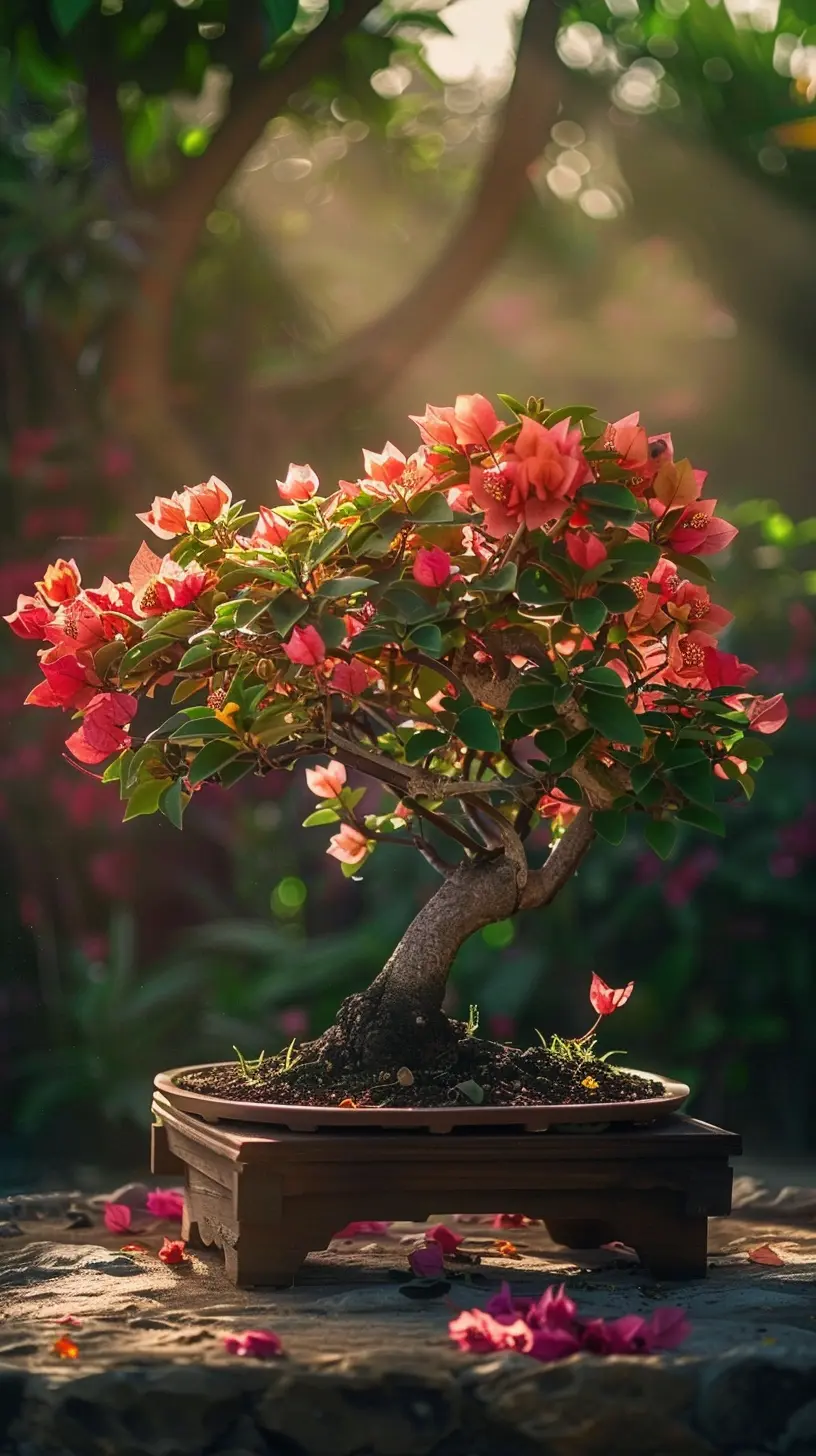

Taking proper care of a bonsai Bougainvillea involves focusing on watering techniques, providing the right amount of sunlight, and managing temperature and humidity. These factors are crucial for the plant’s health and vibrant appearance.
Watering Techniques
Bonsai plants need consistent watering, but be careful not to overwater.
This plant does well when the soil is allowed to dry out between waterings. Check the soil moisture by sticking a finger an inch deep into the soil. If it’s dry, it’s time to water.
Use a watering can with a long spout to reach the tree’s base. Water until it starts to drain from the bottom of the pot. This ensures the roots have enough water.
The plant may require more frequent watering during growing seasons, like spring and summer. Reduce watering during the colder months.
Sunlight and Location
Bougainvillea Bonsai thrives in full sun. It needs at least 5-6 hours of direct sunlight daily.
Place the bonsai either outdoors in a sunny location or indoors near a bright window. If keeping it indoors, ensure it gets enough light by using grow lights.
Avoid placing it in shaded areas, as lack of sunlight can hinder its growth and flowering. If possible, move the bonsai outdoors during the growing season to benefit from natural sunlight.
Temperature and Humidity Management
Bougainvillea Bonsai prefers warm temperatures. During the growing season, keep the temperature above 60°F (15°C).
In cooler months, move the plant indoors if the temperature drops below 50°F (10°C). Keep it in a room with plenty of light or under grow lights.
Maintain humidity levels between 40% and 60%. If the indoor air is too dry, use a humidifier or place a water tray near the plant. Misting the leaves can also help to maintain the required humidity levels.
Monitoring temperature and humidity is vital for the plant’s health, especially in changing seasons.
Shaping Your Bougainvillea Bonsai
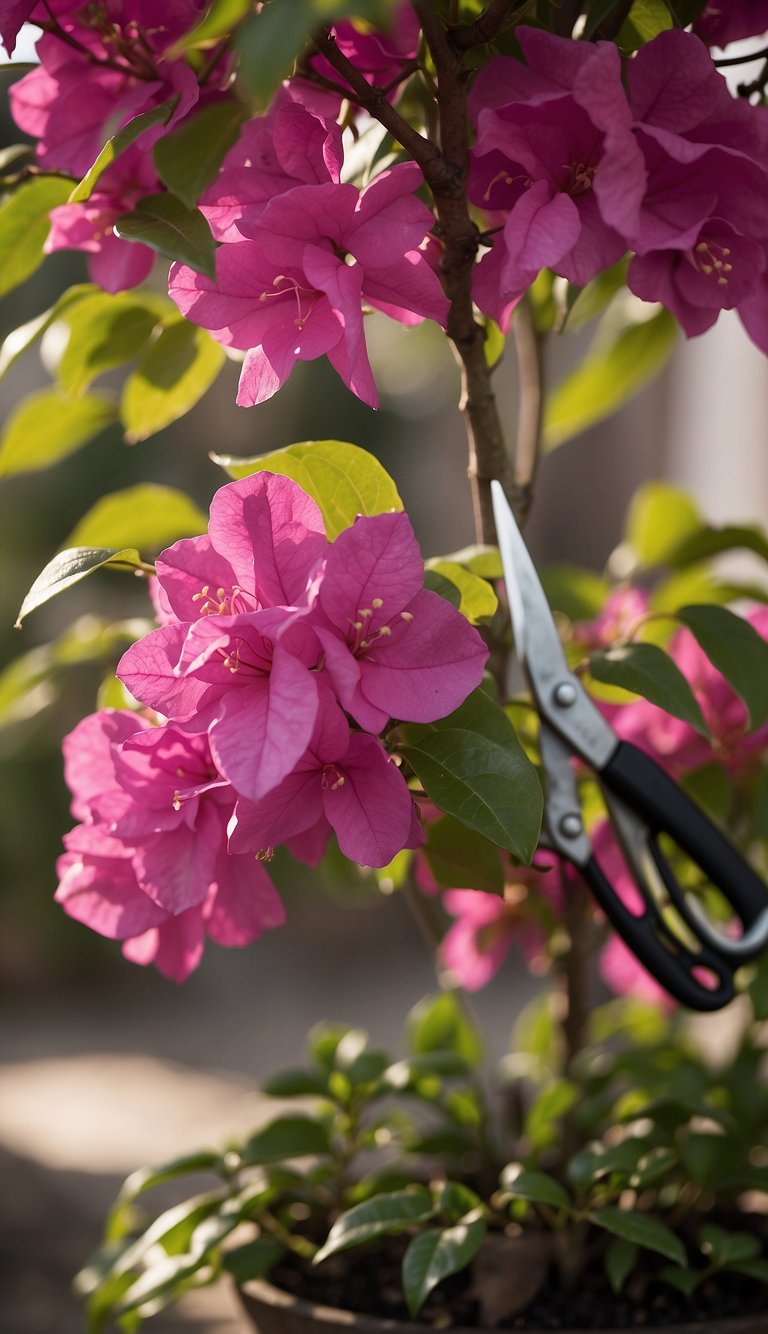

Shaping your Bougainvillea bonsai involves using pruning and wiring techniques to train the plant into various styles. These methods help control its growth and display, allowing you to create beautiful shapes and sizes.
Pruning and Wiring Techniques
Pruning is essential for maintaining the health and appearance of your bonsai. Regular pruning involves cutting back any dead or diseased branches and controlling the plant’s growth.
To encourage branching, cut back about three inches from the plant’s desired height. This allows new shoots to grow, which can then be pruned to the desired shape.
Wiring is another technique to shape your bonsai. Instead of just pruning, you can use wires to guide branches into specific patterns gently.
Clip-and-grow is a method where branches are clipped as they grow, helping maintain the shape without needing wires. For Bougainvillea, wiring should be done carefully, as its branches can be brittle and break easily.
Creating Desired Styles
Bougainvillea bonsai can be trained into various styles, such as formal upright, informal upright, and even horizontal shapes.
For a formal upright style, focus on developing a strong, central trunk with branches that taper evenly. This style shows a classic bonsai appearance, with a straight and balanced look.
Informal upright styles allow for more natural curves and bends in the trunk and branches. This gives the bonsai a more dynamic and interesting appearance.
To achieve this, allow some branches to grow beyond the desired length before pruning them back. This encourages a winding, natural shape.
Both styles can be achieved through consistent pruning and wiring. It’s important to monitor the growth regularly and make adjustments as needed.
With patience and care, your Bougainvillea will display the beautiful bonsai form you’ve envisioned.
Advanced Bougainvillea Care Strategies
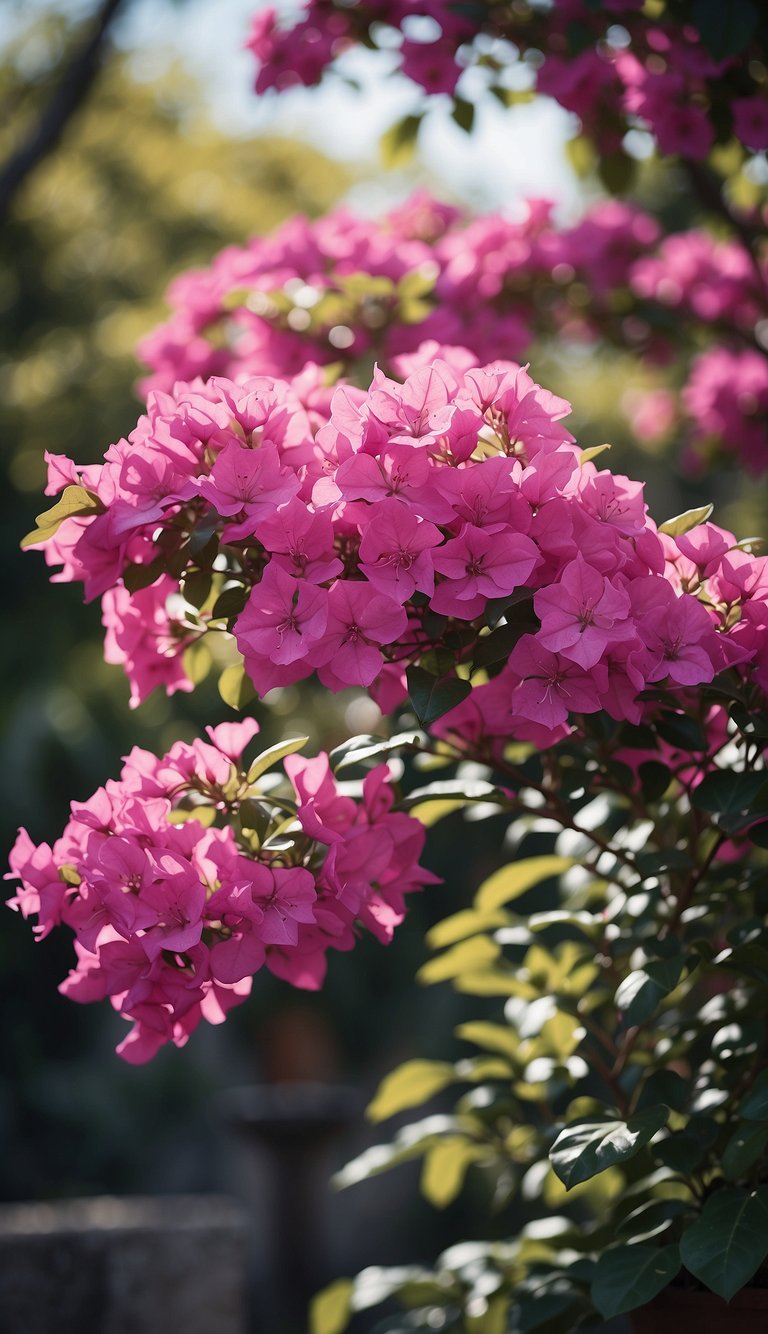

To maintain a thriving bougainvillea bonsai, attention to fertilizing, repotting, and root care is essential. These strategies ensure the plant stays healthy, blooms consistently, and adapts well to its environment.
Fertilizing for Growth and Bloom
Feeding your bougainvillea bonsai is crucial for promoting growth and vibrant blooming. Use a balanced fertilizer with equal parts nitrogen, phosphorus, and potassium (N-P-K).
Fertilize every two weeks during the growing season, ensuring the plant receives the nutrients needed for new growth and flower production.
A slow-release fertilizer is beneficial, providing a steady supply of nutrients over time. During the winter months, reduce fertilizing to once a month. This adjustment aligns with the bonsai tree’s reduced growth rate in cooler temperatures.
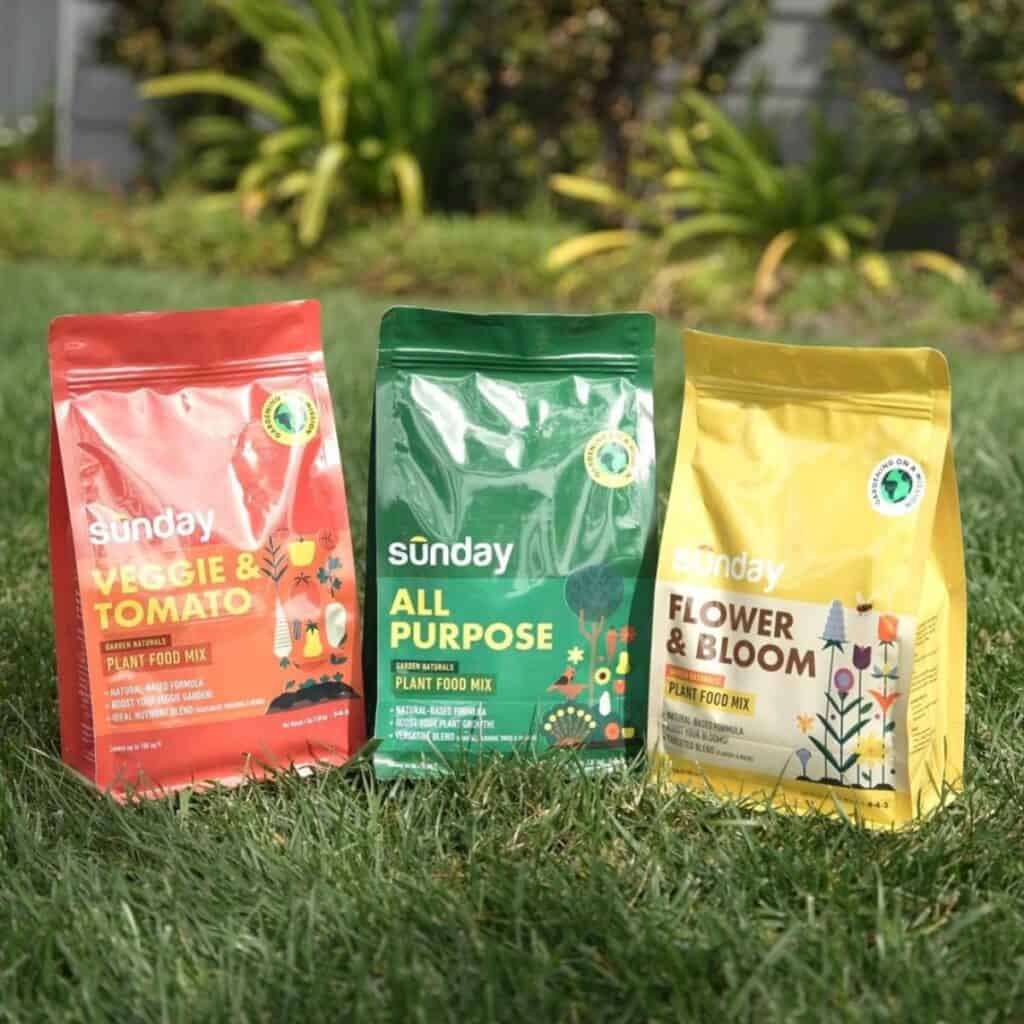

Avoid over-fertilizing, which can damage the root system and lead to excessive leaf growth at the expense of flowers.
Monitoring soil moisture and ensuring proper drainage is also critical to prevent nutrient buildup.
Repotting and Root Care
Repotting a bougainvillea bonsai every 2-3 years helps maintain a healthy root system. Select a shallow pot with sufficient drainage holes to prevent waterlogging. Spring is the best time for repotting as the tree enters its active growing phase.
Begin by carefully removing the bonsai tree from its pot. Trim the roots, cutting back about one-third to encourage new, healthy root growth. Be gentle to avoid damaging the finer roots critical for nutrient uptake.
Use a well-draining soil mix, preferably one designed for bonsai. After repotting, water the tree thoroughly and place it in a shaded area for a week to reduce transplant shock.
Resume regular care once the tree shows signs of new growth, ensuring it adapts well to its refreshed environment.
Troubleshooting Common Issues
Caring for bonsai trees of Bougainvillea or any kind of plant involves dealing with pests, diseases, and environmental stress. By knowing how to prevent these issues, your plant can thrive.
Pest and Disease Prevention
Bougainvillea bonsai trees are often affected by pests like aphids, mealybugs, and scale insects. These pests can damage leaves and hinder growth.
Regularly inspect the plant to prevent infestations and use insecticidal soap if needed. Natural predators like ladybugs can also help control pest populations.
Root rot is a common disease caused by overwatering and poor drainage. Ensure your bonsai is planted in well-draining soil, and avoid watering until the topsoil is dry.
Symptoms of root rot include yellowing leaves and wilting vines. If root rot occurs, trim affected roots and repot in fresh soil.
Bougainvilleas are also vulnerable to mildew and fungal infections. Keep foliage dry by watering the soil directly and improving air circulation around the plant.
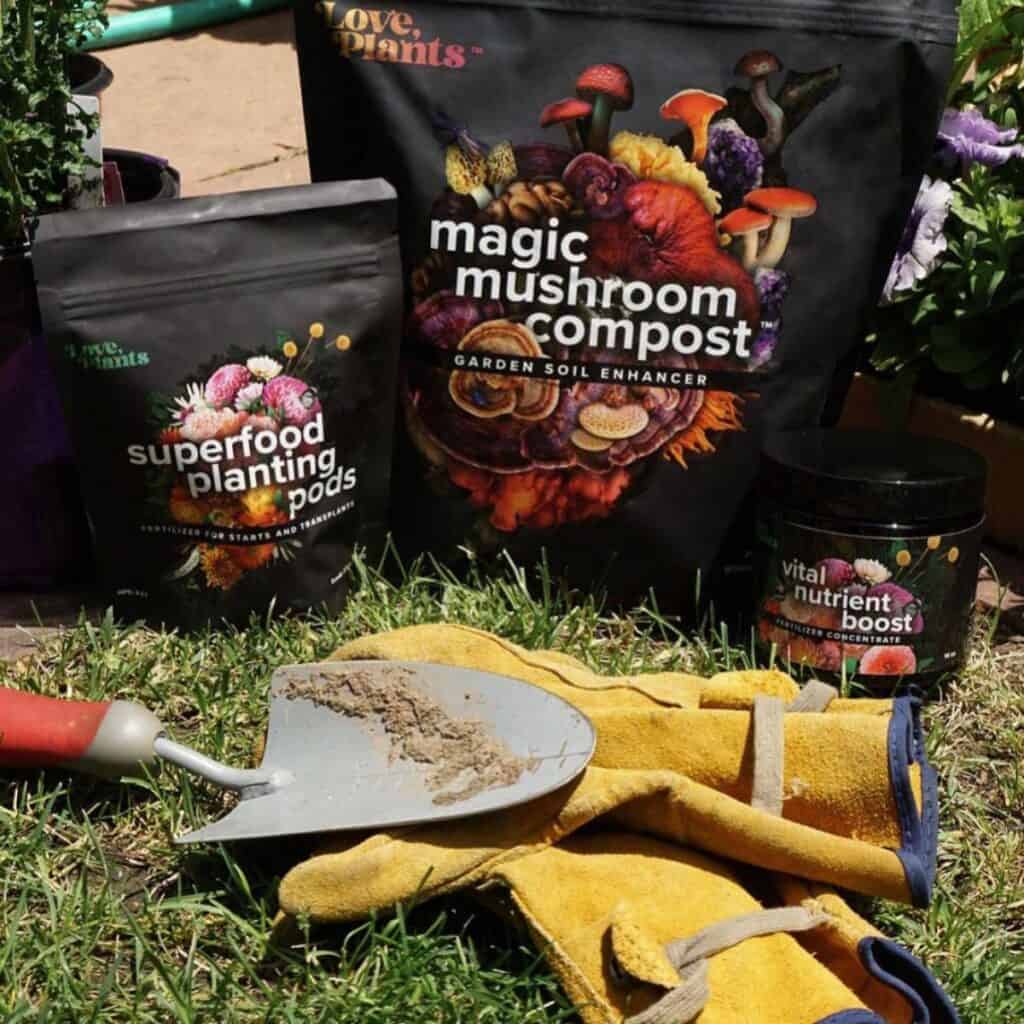

Dealing with Environmental Stress
Bougainvillea bonsai trees thrive in warm climates and need at least six hours of sunlight daily to produce vibrant blooms. Without enough sun, the plant may not flower. Position your bonsai in a sunny spot to ensure ample light exposure.
Overwatering is a significant cause of stress. Bougainvilleas prefer well-draining soil to avoid waterlogged roots. Consistent overwatering can lead to root rot and leaf drop. Water the plant only when the top inch of soil is dry, and ensure proper drainage in the pot.
Sudden changes in temperature can also stress the plant. Protect it from cold drafts and frost by moving it indoors during colder months. On hot days, provide some shade to prevent leaf scorch. Regular pruning helps maintain the plant’s shape and reduces stress by managing growth.
Proper care and attention to these issues will help your Bougainvillea bonsai tree flourish.
Frequently Asked Questions
Bougainvillea trees add beauty to any garden. They need specific care, can be grown from cuttings, and have various growth styles.
Here are some frequently asked questions to help you maintain a healthy and vibrant Bougainvillea.


How do you care for Bonsai Bougainvilleas?
These trees need well-drained soil and daily watering during the growing season. They prefer humidity levels between 40% and 60%.
During winter, when humidity is low, misting or using a humidifier helps. Prune regularly to maintain their shape and encourage flowering.
What are the most popular Bonsai styles?
Some popular styles include informal upright, cascade, and semi-cascade. Each style offers a unique way to showcase the tree’s natural beauty.
The chosen style often depends on the tree’s natural growth pattern and the owner’s preference.
Can you grow a Bonsai from cuttings, and if so, how?
Yes, you can grow Bougainvillea Bonsai from cuttings. Take a semi-hardwood cutting, treat it with rooting hormone, and plant it in well-drained soil.
Keep it moist and in a warm place until roots develop. It’s a cost-effective way to start a bonsai.
Is it possible to keep a Bougainvillea Bonsai indoors, and what are the requirements?
A bonsai form Bougainvillea can be kept indoors with adequate light. They need several hours of direct sunlight daily.
Place the tree near a window with plenty of light. During winter, consider a grow light to supplement natural light.
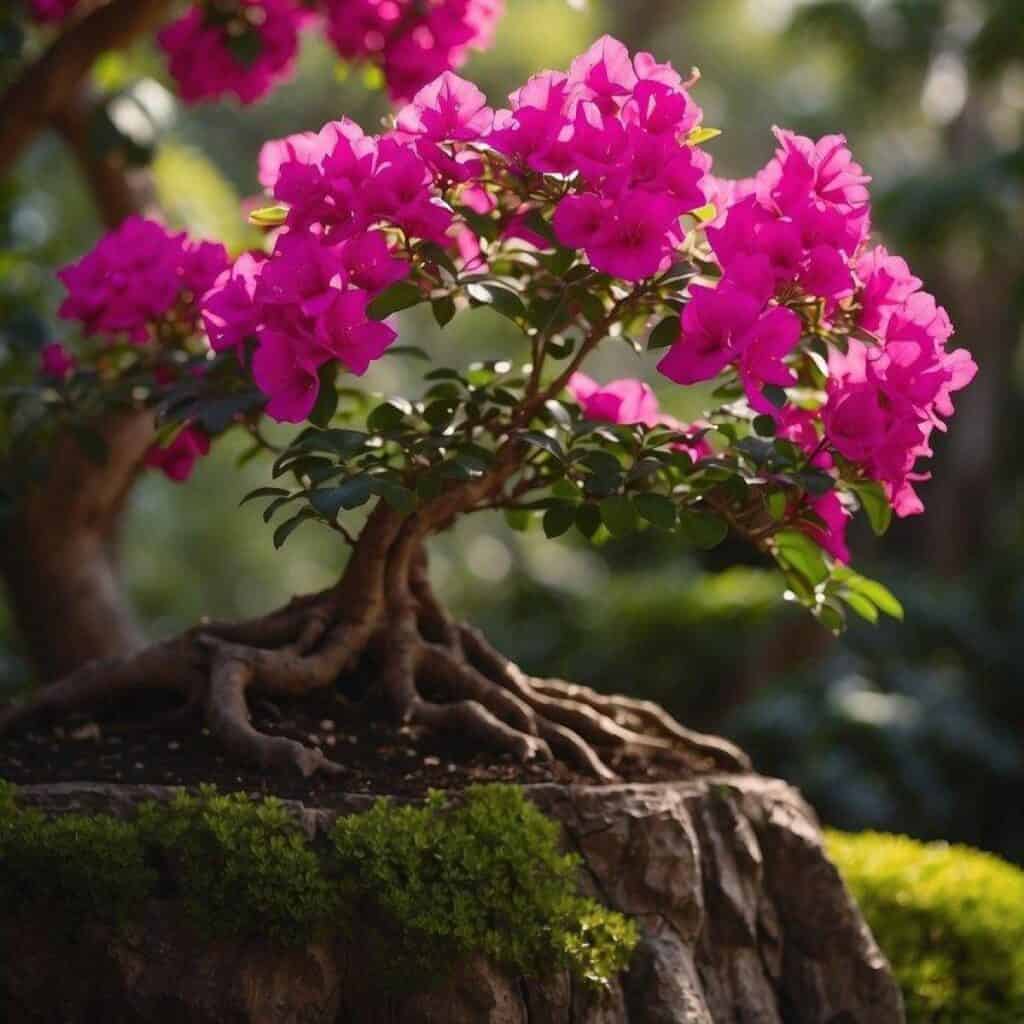

What are the best varieties of Bougainvillea to use when creating a bonsai?
Some of the best varieties include ‘Raspberry Ice,’ ‘Orange King,’ and ‘Jamaica Red’. These varieties are known for their vibrant colors and adaptability to bonsai techniques. They are also relatively easy to care for and shape.
How do you manage the growth and size of a Bougainvillea Bonsai?
Regular pruning helps manage growth and maintain size. Remove dead or unwanted branches to shape the tree. Use wire training to guide branches in the desired direction. Repot every 2-3 years to refresh the soil and manage root growth.




